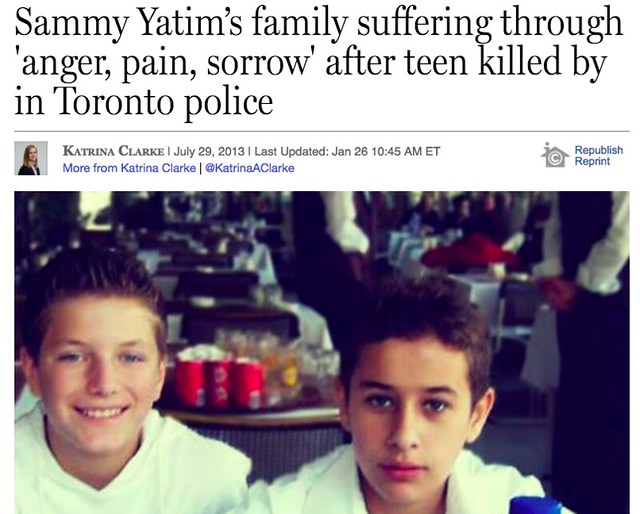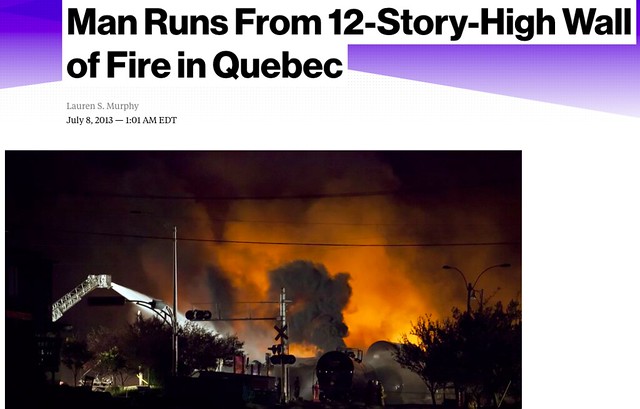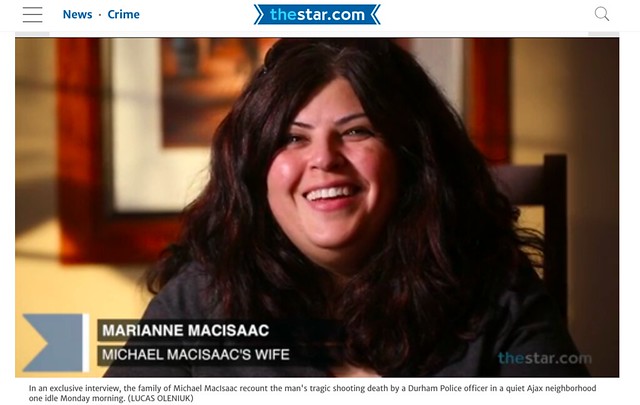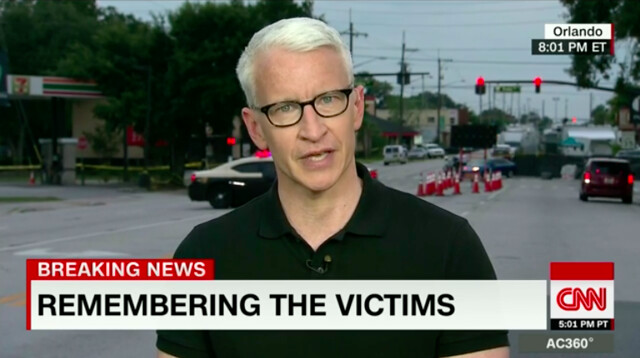Seasoned journalists will tell you there are right and wrong ways of approaching a grieving family.
By Katrina Clarke
Standing in the doorway of a man whose nephew died in a police shooting 36 hours earlier, I felt like an intruder.
“I can’t deal with this,” said Mejad “Jim” Yatim, a tired-looking man in a bathrobe, waving me away when I introduced myself as a reporter. “It’s a very tough time.”
Tears sprung to my eyes as I reached for a piece of paper to scribble down my email address. I was two months out of journalism school and this was the first time I’d come face to face with a distraught person grieving. I felt guilty for intruding on his private pain, sad for what he was going through and unprofessional for letting my emotions show.
I asked him to email me if he wanted to talk. Then I left.
The so-called “pickup” or “death knock” is hard for reporters. It often involves showing up on a doorstep on the worst day of a family’s life, asking about a loved one who’s just died. The best case scenario is they invite you in, share intimate details and help you paint an accurate, full picture of the deceased. Worst case scenario is they slam the door in your face and you skulk back to the newsroom empty handed.
For some reporters, a vulture-like feeling of asking families to share private grief never goes away. For others, they find comfort knowing their actions — giving a family a last chance to share their loved one’s stories — serve a higher purpose.
But, as seasoned reporters, editors, journalism professors and grieving families will tell you, there are right and wrong ways of approaching a grieving family.
Reporters struggle with ethical implications of grief interviews
Lauren Miller was folding laundry on a Saturday morning in 2013 when she got the call.
Her editors at Bloomberg were sending her to Lac Megantic, Que., where a freight train derailed and exploded, leaving scores missing and presumed dead. This was a huge get for a summer intern still in journalism school.
Miller eagerly accepted the assignment, hopped on a plane, landed in Quebec, rented an SUV and drove straight to ground zero.
“Everything was so tranquil until you got to this downtown part,” she recalled. “It was just burnt. Everything was gone.”
Miller — then known by her maiden name, Murphy — started talking to residents. She spoke with a teenager whose brother was missing and a group of women sitting on a porch. One of the women’s young relatives was missing. She was dazed but agreed to an interview.
For Miller, the interaction was emotionally draining.
“I felt like such a grief vulture,” said Miller. “These people are on their porch grieving and I’m like,‘Hey, do you want to talk into my phone and answer some questions?’”
The ensuing days were difficult, marked by one particularly disturbing incident.
Miller was on the street, walking away from a media scrum, when she overheard a woman talking to another person about her dead daughter-in-law and two grandchildren, who were all incinerated in the blaze. Miller stood transfixed, eavesdropping from a distance, when a swarm of reporters suddenly encircled the woman, shoving recorders and iPhones in her face.
After they left, Miller apologized to the woman for the other reporters’ actions. The woman thanked her.
Miller then trekked to a McDonald’s with the other reporters to access wifi. There, she overheard a reporter boasting about the great content she had for her story. “Got crying grandmother of two grandkids that died. Feature, written!” she exclaimed.
“I was like holy f***. You are talking about people,” said Miller, recalling her disgust at the reporter’s behavior, though she didn’t react at the time. “These are people. And sometimes … we forget this is the worst day of somebody’s life and their whole family’s life.”
Miller’s experiences reporting in Lac Megantic left her shaken. For months, she had recurring nightmares about her loved ones burning in fires. She spoke to a counsellor, which helped her, but she eventually decided to stop covering hard news entirely. Miller now works as a freelance photographer and travel writer, roles she is happy in.
For other reporters, their aversion to grief interviews dissipates over time.
As a rookie reporter, Toronto Star crime reporter Wendy Gillis questioned if she was cut out for journalism, believing that interviewing grieving families was ethically dubious.
Six years of reporting experience later, she now understands the value of giving a family a platform to speak and is convinced talking to grieving families is an important, albeit always difficult, job.
“It’s kind of the least you can do,” said Gillis. “If somebody has taken away your relative, one thing you (as a reporter) can give back to them is a medium for their grief, for their sense of injustice … and a way to memorialize somebody who is now gone.”
Gillis realizes not all families want to talk. To personalize the interaction, she always prefers to visit families in person, or at least to call them. If they don’t want to speak, she asks if another relative would, or she leaves a note and her contact information at the door. She describes her approach as “not pushy” and respectful — a method that sometimes entices a family to speak, other times not.
When a family does agree to talk, she recognizes her work may re-traumatize them. She gives them time to get comfortable with her and open up about memories of their loved one.
“The good details that really resonate with readers are the really painful ones that are hard to extract and hard for people to go over,” she said. “Like, the final moment of their son’s life. Or the final text message they got from them.”
Gillis now strongly believes it’s a reporter’s responsibility to give a victim’s family a chance to speak. Otherwise, the only information the public knows will be “name, age, date of death, way of death,” she said.
Victims’ families tell reporters to be sensitive, patient
When a London Free Press vehicle pulled up outside Al and Pauline Newton’s London, Ont. home in 1997, just a day after a drunk driver killed their daughter, Catherine, their first thought was, “Oh God, here’s the press. Don’t we have enough to deal with?”
But between the time the reporter got out of his car and reached the doorstep, Pauline Newton changed her mind.
“I turned to my husband and I said, ‘You know what? Catherine’s story needs to be told,’” Newton said.
The Newtons spent well over an hour with the reporter, John Herbert, telling him how loved 20-year-old Catherine was and what her aspirations were. Catherine was a “closet nerd” who would have been a great mother one day, they told him.
Herbert listened.
“Part of the healing process in grieving is telling your story,” Newton said. “Being able to tell our story and have this reporter listen and take notes, it helped us.”
The Newtons had another reason for speaking: they knew Catherine’s death — she was hit by a drunk driver while crossing the street — was preventable. They hoped to help stop similar tragedies from occurring in the future by telling her story.
“The public needs to be aware of what was lost and why,” said Newton, who, along with her husband, speaks to journalism classes about how to interview grieving families. “This is the victim, this is the life they would have had, and this was the cause.”
Nineteen years later, Londoners still remember Catherine Newton and the tragedy her family endured. But not all families are ready to speak in the immediate aftermath of tragedy.
“We were in shock,” said Joanne MacIsaac, recalling the days after a Durham police officer killed her brother, Michael MacIsaac, in Ajax, Ont. on Dec. 2, 2013. “We went into family lockdown.”
But in the hours after the shooting, as her brother lay near-death in a hospital bed, Joanne MacIsaac distinctly recalls one interaction with Toronto Star reporter Jennifer Pagliaro outside St. Michael’s Hospital. Pagliaro was there waiting for a press conference about an unrelated incident to start , and MacIsaac was waiting for more family to arrive. MacIsaac was distraught and Pagliaro noticed.
“Jennifer said, ‘Why are you crying?’” said MacIsaac. “I said, ‘My brother’s been shot.’”
Pagliaro’s response and compassion struck a chord with MacIsaac.
“The look on her face … She looked sad. She looked like she felt bad for me,” MacIsaac said, recalling that Pagliaro handed MacIsaac her business card before they went their separate ways.
For weeks after his death, Michael MacIsaac was known only as the “naked man,” shot by police as he ran though a quiet neighbourhood on a cold winter morning. Durham police did not release Michael’s name, at the request of his family.
When the family did share Michael’s name with the public, the MacIsaacs let Pagliaro into their homes. MacIsaac said she wanted to speak to reporters to “set the record straight” about who her brother was, beyond what was reported by the police.
In March 2014, Pagliaro wrote a touching, in-depth feature story about Michael MacIsaac, his heartbroken family and his death. Reading the article felt therapeutic, MacIsaac said.
Ethics experts say go with your gut
Karyn Greenwood-Graham knows what it’s like to be on the receiving end of a reporter’s death call. A Waterloo Regional Police officer killed her son, Trevor, who had mental health issues, during a botched drug store robbery in 2007. She remembers reporters staking out her Paris, Ont. home in the days after he died.
“It was a horrific time,” said Greenwood-Graham. “You want to talk about the person who died but you’re not sure who to talk to.”
Today, she is the founder of a self-advocacy group called Affected Families of Police Homicide. Part of her role involves reaching out to victims’ families and helping them deal with media. One of the first things she tells families who want to speak to the press is: “interview the interviewer.”
“Make sure you feel comfortable with them,” she said. “Ask them the questions that you want to know … Are you a father? … Do you have a family?”
For Greenwood-Graham, it’s important for the interviewer to feel genuine empathy with the family or that they try to understand what the family is going through.
Kathy English, the Toronto Star’s public editor, believes empathy is one of the most important qualities a journalist can possess.
“(Empathy is) the ability to put yourself into someone else’s shoes, into someone else’s heart, to imagine what it feels like to be a mother whose child was just killed on the street,” she said. “I think people know if you sincerely feel that.”
At the same time, it’s necessary to strive for objectivity in the sense that reporters are able to see the facts clearly and ask probing questions, she said. English firmly believes there’s value in asking a grieving family to speak and in aspiring to humanize their loved one, but reporters must also decide how far they’ll go to get a story.
“You know inside what is right and what you can live with,” she said, acknowledging she recognizes rookie reporters are eager to land big stories and that journalistic culture can promote big egos. “I think you have to know, do you have an ethical compass that goes beyond all that?”
English openly admits that as a journalist she sometimes lied to editors when they told her to push a grieving person who had already said no to an interview, telling her editors she returned to doorsteps when she hadn’t. She knew her limits.
But for young reporters, a more personal concern might be showing real emotion. What if you cry? What if you don’t?
It’s okay to show the emotion that you genuinely feel, said Larry Cornies, a journalism program coordinator with Conestoga College. “We are human,” he said.
For broadcast journalists, showing real emotion can be a powerful tool — reminding the viewer that journalists have empathy, Cronies said. He pointed to CNN reporter Anderson Cooper’s coverage of the Orlando gay nightclub shooting, including one broadcast in which the veteran reporter choked up reading victims’ names.
“To have that come through is amazing. That is professionalism,” Cornies said, adding that it would be problematic if a reporter got emotional during every broadcast.
For him, there is no question that reporters must accept speaking with grieving families is part of the job. It may never get easier, but its value to journalism is intrinsic.
“It’s our responsibility as journalists to journal. You’re chronicling a day in the life of the world or your town or your community. Along with that is a lot of sad stuff and a lot of tragedy,” said Cornies. “There is value in honouring the loss of a person … and making somebody more than a statistic.”
As for my own experience with Sammy Yatim’s uncle back in 2013, after he rejected my interview request, I returned to the newsroom, dejected.
Then, hours later, he sent me an email.
“Please forgive me. I have been fighting to sort out my emotions,” Yatim said. “Anger, pain, sorrow. All I can do is cry why not me? I probably deserved those bullets more than he did.”
He went on to say he didn’t want the public to retaliate against the police officer responsible for the death of his 18-year-old nephew, Sammy, who was alone on a streetcar holding a knife when police shot him. Nothing would bring him back, he said.
I had my story. It wasn’t a sit-down interview or an exclusive for the paper, but it gave the public a glimpse into the pain of a family reeling from a tragic loss, at a time when the violent incident was sending shock waves through the city.
As a person and a journalist, I felt good.
[[{“fid”:”6978″,”view_mode”:”default”,”fields”:{“format”:”default”,”field_file_image_alt_text[und][0][value]”:false,”field_file_image_title_text[und][0][value]”:false},”type”:”media”,”link_text”:null,”field_deltas”:{“1”:{“format”:”default”,”field_file_image_alt_text[und][0][value]”:false,”field_file_image_title_text[und][0][value]”:false}},”attributes”:{“height”:516,”width”:773,”style”:”width: 100px; height: 67px; margin-left: 5px; margin-right: 5px; float: left;”,”class”:”media-element file-default”,”data-delta”:”1″}}]]Katrina Clarke is a Toronto-based freelance reporter. She is a 2016 journalism fellow with the Fellowships at Auschwitz for the Study of Professional Ethics (FASPE) program and a graduate of Western University’s master of arts in journalism program. Her work has appeared in the Toronto Star, the National Post, the Bangkok Post and on CBC Life’s digital platform. Find her on Twitter at @KatrinaAClarke or reach her at katrina.clarke24@gmail.com.
Katrina Clarke is a Vancouver- and Toronto-based freelance reporter. She writes for publications including the Toronto Star, CBC Life and J-Source. Find her on Twitter at @KatrinaAClarke.





